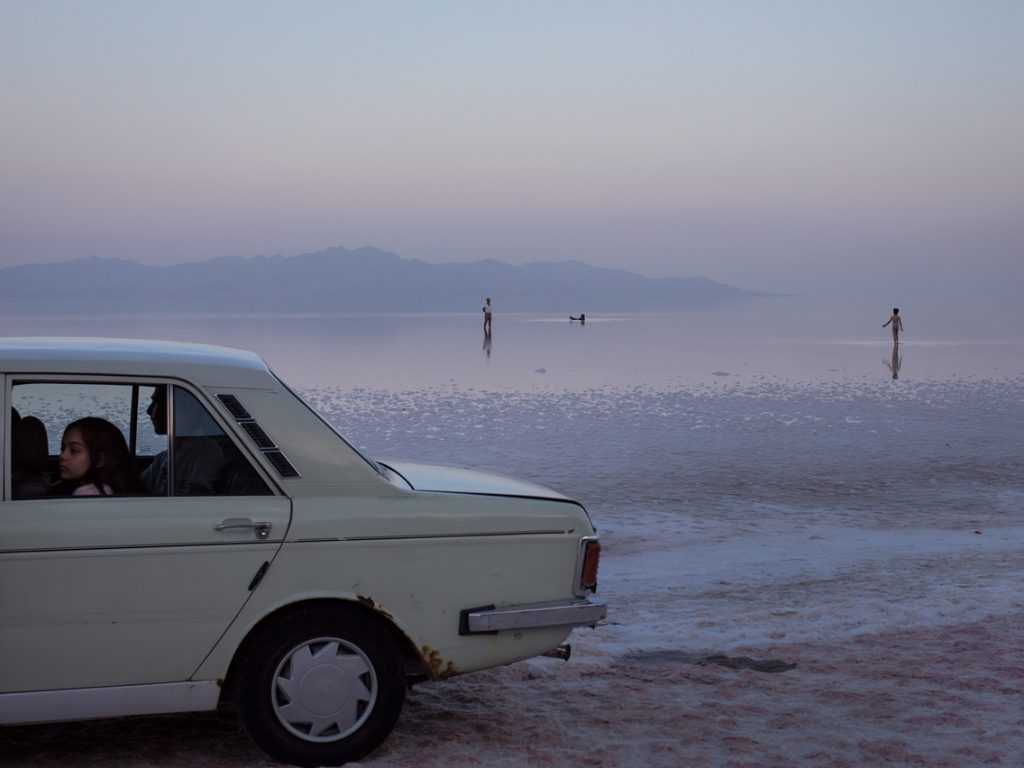Upon the publication of the article “When Carbon Copies fade” on this blog, Maximilian Mann, the photographer whose project is questioned there, provided a statement which was published in the previous posting. That followed quickly, but remains unsatisfactory and unconvincing. A rebuttal by Kaveh Rostamkhani.

© Kaveh Rostamkhani, Lake Urmia, 2017My initial article has demonstrated uncanny closeness between the works of Maximilian Mann and Solmaz Daryani, two different photographers of very different backgrounds, on the same subject. Thus it called for practitioners of documentary photography and photojournalism including relevant institutional agents to act and discuss a number of urging questions raised through its comparison. These are fundamental issues that affect this industry and its development. The article advocates to discuss possible measures to be taken and mechanisms to be introduced to deal with the issues of appropriation and plagiarism.
Following the publication, Maximilian Mann was quick to provide a statement. There he doesn’t address any of the questions for which his work serves as a perfectly suited example, but only enthusiastically denies plagiarism in his project “Fading Flamingos”. To this end he lists a number of photographers’ works he came across during his research that include Solmaz Daryani’s.
Mann admits that he has been aware of Daryani’s work prior to starting his project, but adds that there are other pictures in her project with no similarities. In addition he provides a thitherto unpublished “large edit” of his project stating it would consist of a wide range of images and be very diverse.
Examining the “large edit”, it quickly becomes obvious that they include a number of repetitive and redundant pictures from the sights and motives questioned in the initial article. That selection is also bolstered with a vast number of daily life pictures from the area around the town of Urmia. It must be clear to him that these are irrelevant to the subject of the story, i.e. the drying out Lake Urmia and the narrative he has pursued to establish. Thus he had neither included any of them in the narrow edit on his collective’s website nor in the edits entered into contests.
Mann’s argumentation detracts from addressing the fact that to build a narrative, he has selected an edit of ten out of circa 11.000 images he has shot. And that of these selected ten, six pictures are eerily similar to another existing project well-known to him on the same subject. It doesn’t need a PhD in maths to understand what a negligible possibility that is to happen by pure coincidence.
Mann ignores the key matter that his edit constructs a coherent narrative intriguingly similar to a part of Daryani’s
In summary Mann provides a lot of additional content but little to no proof to reject the careful and precise demonstrations of the resemblances of his project with Daryani’s. He even admits they “cannot be dismissed”. Yet by solely focusing on single pictures in his statement, he utterly ignores the key matter that his carefully selected edit constructs a coherent narrative intriguingly similar to a part of Daryani’s, but continues to deny plagiarism.
But what does Mann’s project which according to him was carried out independently, add to the photographic discourse about the Lake that has not been available long before him? Are his perspectives any different? Despite having known a plenty of projects on the Lake, he has chosen approaches that can be found by a number of other photographers and arguably executed his with a great portion of geometric precision.
Mann believes his “way of photographing is not plagiarizing, but can be found by many photographers” and concludes that his “work was created under strict consideration of journalistic standards” and his “photographs conform to the strict rules of the World Press Photo Awards, which is committed to truthful and accurate reporting”.
Thus he confirms the concluding impression discussed in the initial article that “much speaks for Mann’s project being a surgical and aestheticised remake aimed at the photo award industry” but offers little substantial to reject plagiarism or appropriation. Maximilian Mann’s response remains unsatisfactory and raises more questions rather than giving answers, if any.
